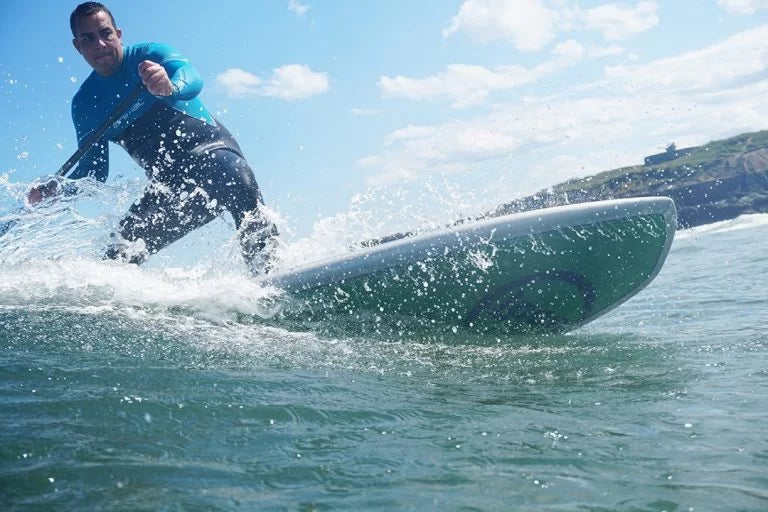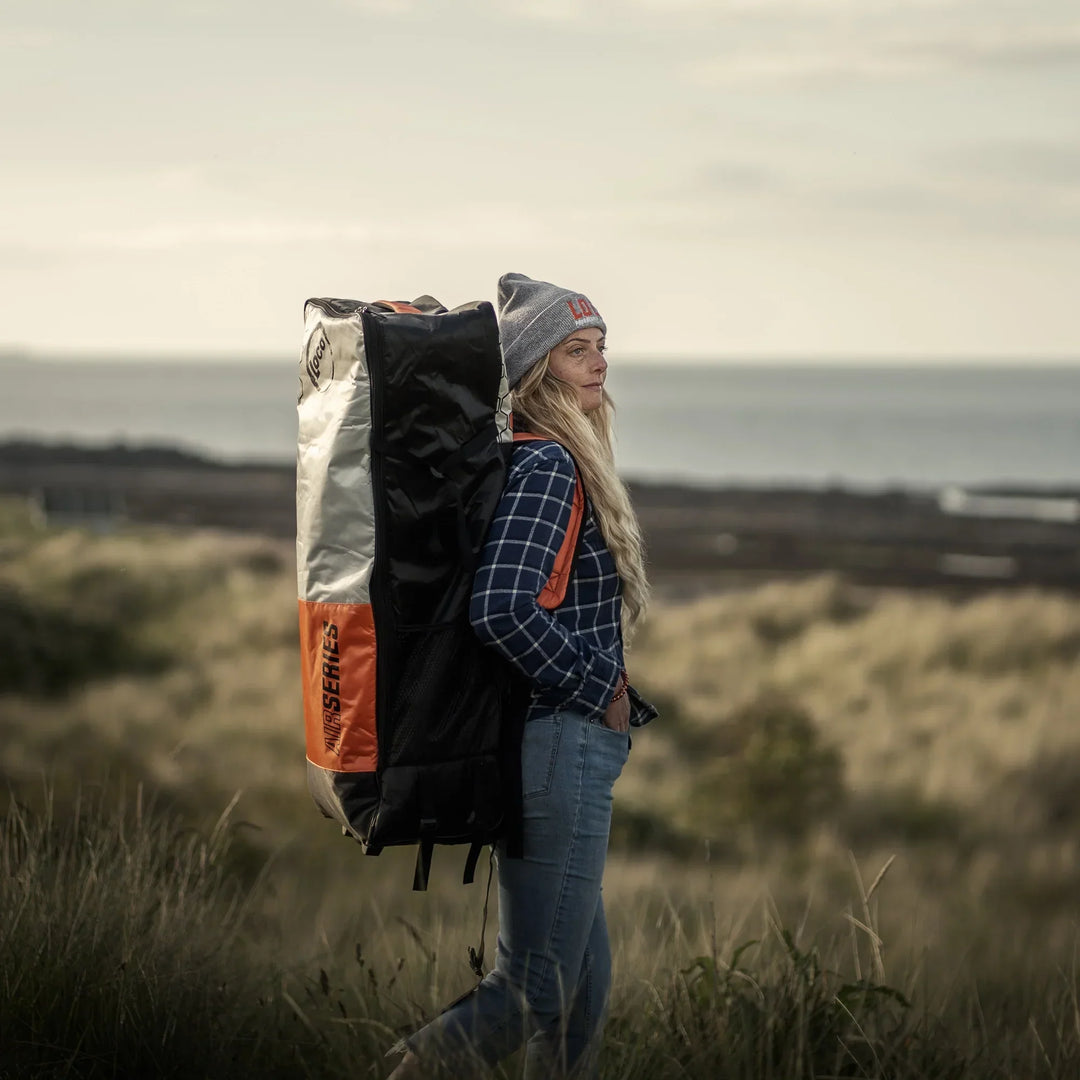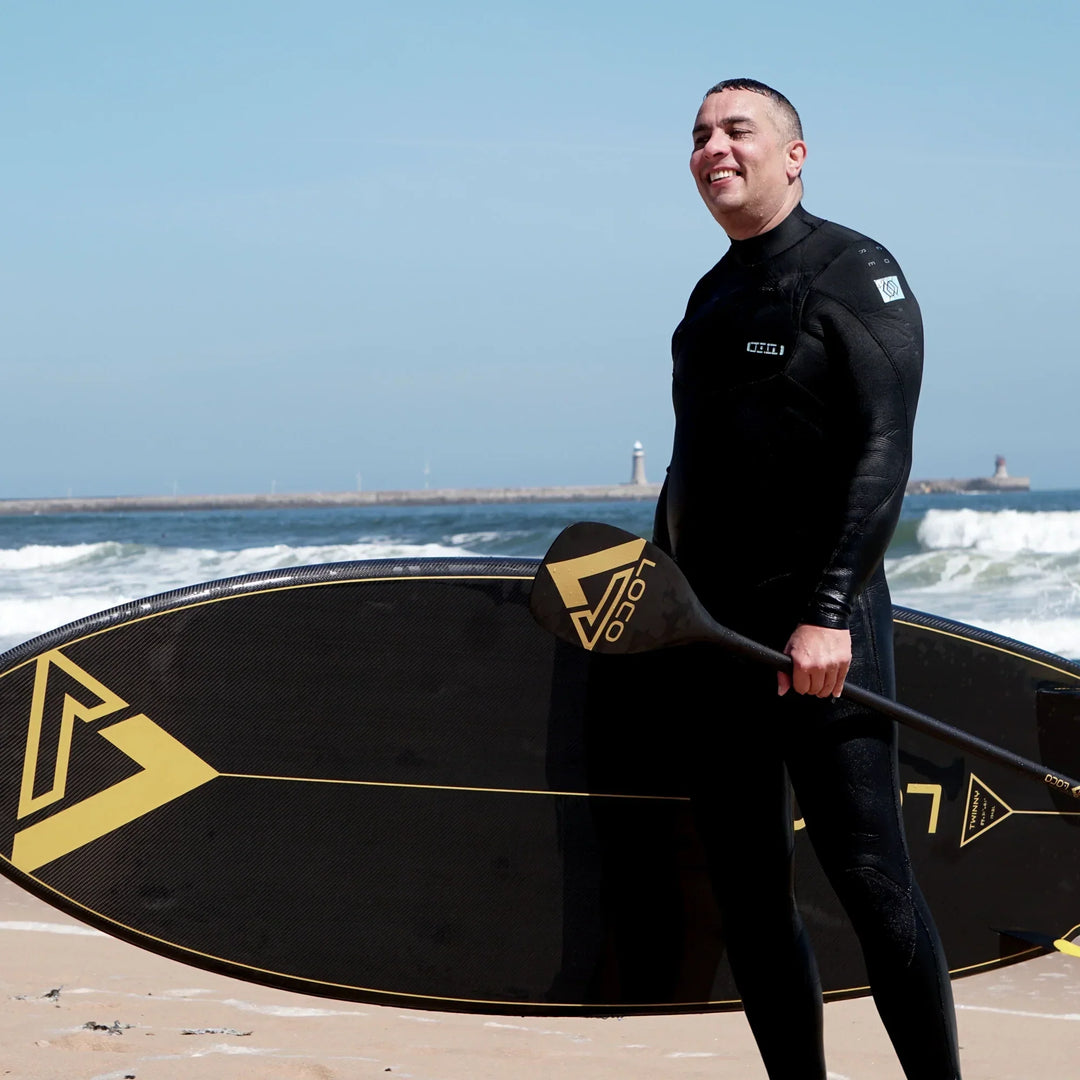Solving The Big Guy Surf SUP Conundrum

Solving The Big Guy Surf SUP Conundrum
Solving The Big Guy Surf SUP Conundrum - It’s fair to say that most guys with paddle surfing intentions don’t necessarily fit into the 60-75kg sub 5’10 category so we have to ask ourselves how relevant are the volume to weight ratios and kit choices of our SUP surfing heroes? For most of us we have to pay for our kit and don’t always have unlimited budgets to justify 2-3 boards so it comes down to compromise to a certain extent.
Loco boss Joe has always been a bit of a unit. Even when he first started paddle surfing way back he was still 95kgs (vs 110kg now) but at 6’4” he found narrower boards of the time too wobbly and ‘wide’ options from the big brands far too corky but choice was limited so his journey of trying to make/ride the perfect big guy surf SUP started there. He tried everything from 8’6” x 30” fishy outlines to longer 10’6 x 28” and everything in between. Sadly nothing quite hit the mark which was the main reason he ventured out to Fuerteventura to collaborate with Witchcraft and design his first custom shape which formed part of the original Loco three board offering. The shape still lives on in the form of our Amigo range, admittedly the boards have seen ‘a few tweaks’ over the last 7 years but the concept of a short, stable all-rounder with real surf performance is still encoded deep in its genus.
Despite Loco’s current range having some more lively surf shapes the big man often trades in his El Diablo or Aztec for a 9’5” or even a 9’11” Amigo over the winter months when the surf is pumping but the wind is howling too. The extra volume and thickness provide a bit more glide and stability but once you’re at the tail decent footwork can still make these 155/175L boards turn with style. So let’s all buy Amigos, job done? Sadly it’s not as simple as that and Joe will testify he’d rather be on the smallest board possible which at his current 110kg is 8’9” x 30″ 125L or the 8’0 x 29” Aztec at 120L. This may sound crazy small but there’s more at play than just volume when you’re choosing a board as a big guy.
What we’ve discovered over the last seven years is that 29-31” wide is the sweet spot for 90% of fuller-figured SUP surfers. If you’re taller err towards the upper end, if you’ve got a really low centre of gravity even 28″ on a longboard or a stubby can also work provided it has enough volume to float you. Admittedly much comes down to what sort of waves you get, how ‘busy’ you want to be with the paddle and how often you get in. A little extra volume can be useful especially in wind, gutless summer waves and if you’re not paddle surfing regularly, so don’t go mad!
Solving The Big Guy Surf SUP Conundrum - So now you’ve got an idea of width what about length? For shortboard SUP surfing generally 8′-9′ ish long gives you enough waterline so that the board still glides nicely without feeling like you have a massive board. We prefer a rail 4″ thick (in the middle) or thinner for better bite through the turns. For stubby outlines you don’t want to go much bigger than 8’5 or it’s not that short. There’s usually a compromise with volume so expect them to look chunky in big boys sizes.
These boards generally work best in small to medium sizes waves with instant acceleration and shorter turning circles making for some good squirts and hacks. The fat tails can be prohibitive in larger surf as you lack control even with ninja like footwork. The very much in vogue longboard SUP has to be 10′-11′ for the salad dodger. These boards offer early entry and flowing lines but can still slash a turn if you ride them from the tail. You’re never going to do an air reverse on one but these boards slap a smile on your face and have some all-round crossover.
When Joe recently comparison tested the 2019 8’9” El Diablo at his limit versus the next size up (9’2”) the difference in performance was marginal. Without doubt if it’s clean he’ll always take the smaller version but if it’s choppy or disorganised he’ll grab the next size up. If anything it makes life a bit easier as you can stand around waiting for the set, you have better mobility/glide to get to any shifting peaks and the extra ankle pull of a board that’s only 6” longer and 20L larger when you invariably wipe-out is hardly noticeable. A lot of people bang on about 1.3 to 1.5 x bodyweight for advanced versus intermediate but if Joe can ride a 125L at 110kg there is some wiggle room. If you go much above 150L you’re entering all-rounder territory which is fine if you want that but if you want to do more than go straight a smaller board will help y0u progress even if those first steps take a bit longer.
Solving The Big Guy Surf SUP Conundrum - Unlike most brands out there Loco has always catered for the fuller-figured rider as Joe loves to surf and won’t settle for a scaled up medium-size rider’s board. Making a credible big boy’s board has a lot more to it than changing a few values on a 3D shaping package. There are subtle nuances in terms of volume distribution, rocker line and hull dynamics to assist with glide. It shouldn’t be surprising to learn that many bigger guys are now on their second or third Loco surf SUP so we must be doing something right.
If you need any specific big boy advice Joe’s been there himself, has coached SUP surfing for over ten years and has surfed all over the world so is great resource. Whatever you go for ultimately stick to the principles we outline and you won’t go far wrong.




